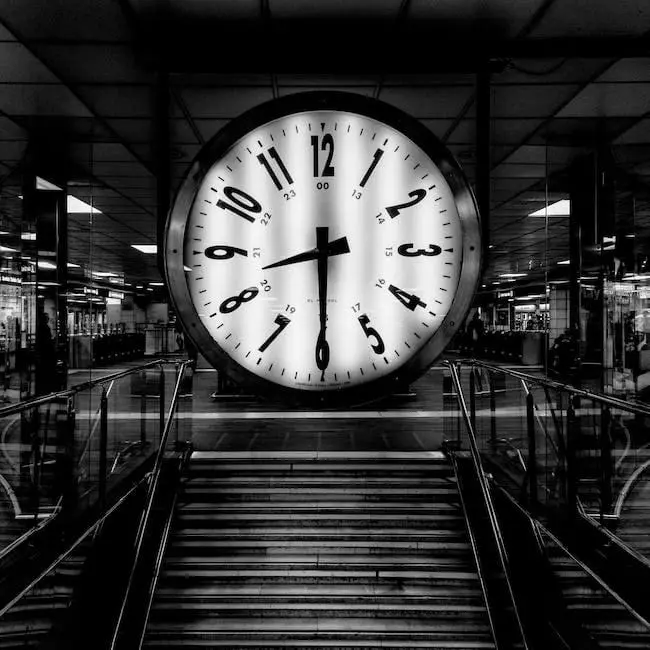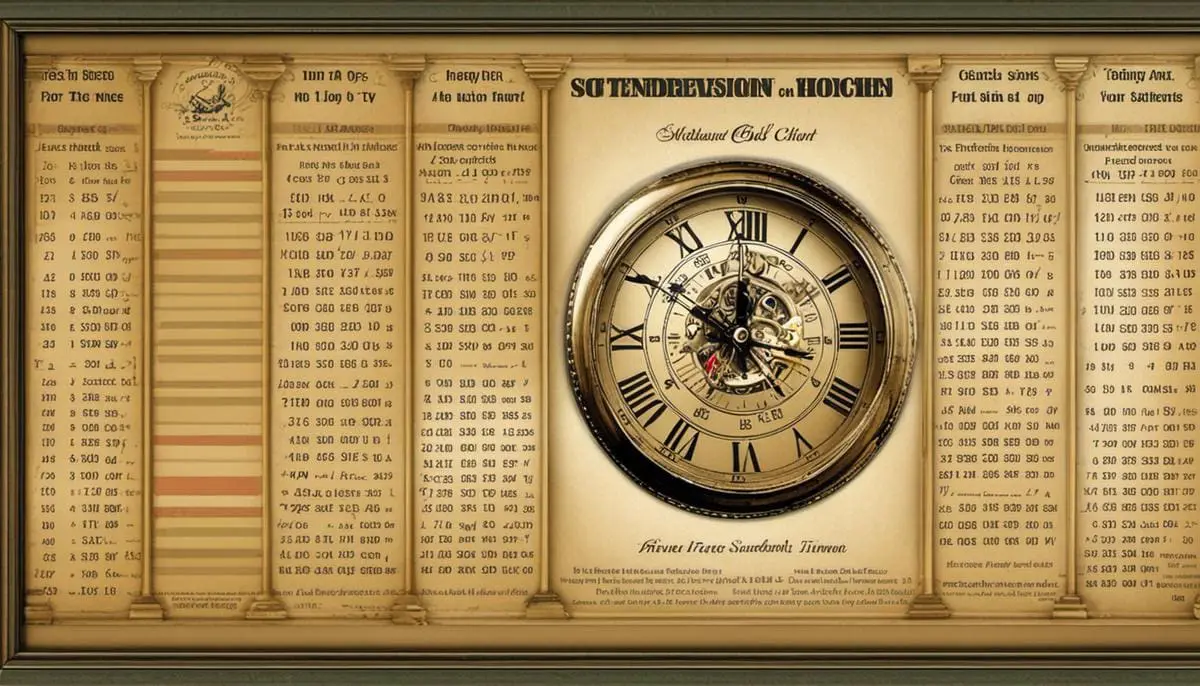Amid a world where time is earmarked in varying formats, understanding Military Time stands as a unique, yet practical skillset. Traditionally, we are accustomed to a 12-hour clock system, divided between AM and PM. However, Military Time introduces us to a coherent 24-hour clock format, eliminating the ambiguity present in the conventional system. This essay allows you to explore this fascinating method of timekeeping, meticulously delving into the basics of Military Time, the art of converting Regular Time to Military Time, the indispensable method of using a Military Time Chart, and giving you the platform for practical exercises. By the end of this learning journey, you’ll be adept at navigating through Military Time with ease and precision, paving the way for utility in situations ranging from interpreting a military-based schedule to planning in a 24-hour format.
Understanding Military Time
Understanding the Basic Concept of Military Time
Military time, also known as the 24-hour clock, is a method of timekeeping that is widely used around the world due to its simplicity and accuracy. Contrary to the common 12-hour clock used primarily in the United States, the military time runs from 0 to 23 hours, eliminating the potential for confusion between AM and PM hours. For instance, instead of 2:00 PM, military time would designate this as 1400 hours.
Difference between AM/PM and Military Time
Understanding the difference between AM/PM and military time is an essential step toward understanding the military time format. In the 12-hour clock, two periods known as the ante meridiem (AM) and post meridiem (PM) are used to distinguish the time of the day. The AM period runs from 12 midnight to 11:59 in the morning, while the PM period starts from 12 noon to 11:59 at night.
In military time, however, there is no need to differentiate between AM and PM as each hour of the day and night are given their unique number. Midnight is 0000, and the day runs through to 2359 at one minute before midnight of the following day.
Transition from Standard Time to Military Time
Transitioning from standard time to military time can seem challenging at first, but it’s rather simple once you understand the basic concept. For the hours from 1 to 12 in the morning (AM), military time coincides with the standard time, but you may omit the leading “0” for single-digit hours. However, for the PM hours, simply add 12 to the standard time. For instance, if it is 7 PM, add 12 to 7 and the equivalent military time would be 1900 hours. The transition can become simpler with the aid of a military time chart, where all the conversions are done for you.
Reading Military Time
Reading military time might seem like a daunting task initially, but with practice, it becomes quickly intuitive. The key is to understand the simple calculation involved. If the time is 0000 to 1200, you read it as regular time, but from 1300 to 2400 (considered as the PM hours), subtract 12 from the given time to attain the standard time in the 12-hour format. For example, for 2200 hours, subtract 12 and the time is 10 PM.
Recall, each unique number corresponds to each hour in a day, thus there’s no ambiguity in reading the time.
In sum
By grasping the basic concept of a 24-hour clock, differentiating between AM/PM and military time, learning how to transition from standard to military time and knowing how to read military time, you can understand and use military time effectively.

Converting Regular Time to Military Time
Understanding the Concept of Military Time
Military Time, also known as a 24-hour clock, is commonly used by the military, emergency services, hospitals, and other entities that require precision and clear communication to avoid misunderstandings. Unlike standard time, which uses a 12-hour cycle, military time operates on a 24-hour cycle. There is no “AM” or “PM” used in military time. Hours from 1 to 12 correspond to what would be AM in standard time, and hours from 13 to 24 correspond to what would be PM.
Converting AM Hours to Military Time
The first twelve hours of the day in military time are represented the same as in standard time, except for the difference that 0000 or 00 is used to represent midnight instead of 12:00 AM. So if it’s 10:20 AM in standard time, it’s 1020 in military time. The only change is to drop the colon and the AM/PM reference. Keep in mind, midnight is stated as 0000 or 00, not as 24.
Transition to PM: Converting Afternoon and Evening Hours
Things get a little bit different when we cross over to the PM. For times in the afternoon and evening, add 12 to the standard time hour to convert it to military time. For instance, 1:00 PM would be 1300 in military time, while 10:30 PM would become 2230. Note that you again need to drop the colon and the PM while converting.
Easy Reference for Minute Conversion
When it comes to minutes, there is no change in conversion from standard time to military time. For instance, if it’s 6:15 AM or PM, in Military time it would be 0615 and 1815 respectively. The important thing is to remember not to put a colon between hours and minutes.
Quick Recap: Key Points for Conversion
Remember these key points to ease your conversion: midnight is noted as 0000, from 1 AM through 9 AM remove the AM and any colon but add a zero before the hours – this shows the time in the ’00’ to ’09’ format, from 10 AM through 11 AM remove the AM and any colon, from 12 PM to 12:59 PM remove PM and any colon. Add 12 to hours of time from 1 PM through 11 PM, then remove the colon and PM for conversion.
Using a Military Time Chart
Understanding Military Time Chart
A military time chart is used to convert standard 12-hour clock time into a 24-hour military time format. The 24-hour military time format is commonly used in the military, emergency services, airlines, and hospitals to avoid confusion caused by the absence of AM or PM in a 12-hour clock.
How to Read the Military Time Chart
Firstly, observe that the military time chart comprises two columns: one column represents time in a standard 12-hour clock format while the other represents the corresponding 24-hour military time. The 12-hour time format will range from 1:00 AM to 12:00 PM and 1:00 PM to 12:00 AM. The 24-hour military time format starts from 0000 (midnight) and goes up to 2359 (midnight).
To read the chart, you just need to match the standard time from the 12-hour time column with its corresponding military time from the 24-hour time column. For instance, 1:00 PM in standard time is 1300 in military time.
Conversion Process
Converting from standard time to military time involves a simple process. For times in the AM, you just need to remove the AM indicator. So, 8:00 AM becomes 0800 in military time. Remember to apply leading zeros for times less than 10:00 AM.
For PM standard times, simply add 1200 to the time, and remove the PM indicator. For example, 2:00 PM becomes 1400 in military time.
Converting from military time to standard time is just as simple. For times before 1200, just convert it to the corresponding standard time, and add the AM indicator. For instance, 0500 becomes 5:00 AM.
For times from 1300 and onward, subtract 1200 from the military time and add the PM indicator. For example, 1800 becomes 6:00 PM.
Using the Military Time Chart
Now you can easily use a military time chart in order to internalize the conversion processes. Start by familiarizing yourself with common military times such as 0000 (midnight), 0600 (6:00 AM), 1200 (noon), and 1800 (6:00 PM).
Further, practice converting times in both directions until you are comfortable with the process. It’s also essential to remember that military time doesn’t use colons between hours and minutes. So, 2:30 PM in standard time would be written as 1430 in military time, not 14:30. By routinely referring to the military time chart and practicing conversions, you’ll soon be fluent in reading and writing military time.

Practical Exercises
Understanding Military Time
For many military-based schedules or timetables, they use a 24-hour clock instead of the standard 12-hour clock most Americans are accustomed to. This can often be referred to as “military time.” Key thing to remember is military time does not use a colon to separate hours and minutes.
Converting Military Time to Standard Time
To convert military time to standard civilian time, there are a few rules to follow:
- If the military time is 1300 or greater (meaning from 1300 to 2359), subtract 1200 from the given time to get the regular 12-hour format. For example, if the military time is 1730 hours, simply subtract 1200, resulting in 530, which translates to 5:30 PM.
- If the military time is less than 1000 (from 0100 to 0959), simply remove the zero at the beginning if any, and use the remaining digits as the standard time but in the AM. For example, if the military time is 0615, it corresponds to 6:15 AM.
- Remember, military time runs from 0000 at midnight to 2359 just before the next midnight. Therefore, 0000 corresponds to 12:00 AM, and 1200 means 12:00 PM.
Practice Scenario: Interpret a Military-Based Schedule
Let’s put this into practice with a scenario. Assume you have a military-based schedule for a training day, and you need to convert it into standard time.
- 0630 – Physical Training: Remove the zero at the beginning. Converted time is 6:30 AM.
- 1130 – Lunch: The time is under 1200, hence it stays the same, 11:30 AM.
- 1345 – Weapons Training: As the time is over 1300, subtract 1200. The converted time is 1:45 PM.
- 1700 – End of Day: This is also greater than 1300, so subtract 1200 again. The converted time is 5:00 PM.
Practice Scenario: Understanding Military Timetable
Let’s do another exercise with a military-base timetable:
- 0400 – Wake up: By removing the zero at the beginning, the converted time is 4:00 AM.
- 0915 – Briefing: As it is less than 1000, it corresponds to 9:15 AM.
- 2100 – Lights out: Subtract 1200 from the time, resulting in 9:00 PM.
By understanding these simple conversion rules, you can accurately interpret military time on any schedule or timetable.

After internalizing the understanding, conversion process, use of charts and implementing your knowledge through practical exercises, you’ve successfully entered into the realm of competency in Military Time. Because every hour counts, and the understanding of Military Time saves you from the confusion of AM/PM while offering an unambiguous, concise method of timekeeping. Now, whether it’s reading a military-based schedule or comprehending a 24-hour timetable, you can efficiently deal with it. So, don’t look at the clock as merely an instrument to tell time, but appreciate it as a tool communicating accuracy, discipline, and global synchronization that is integral to our day-to-day lives.

